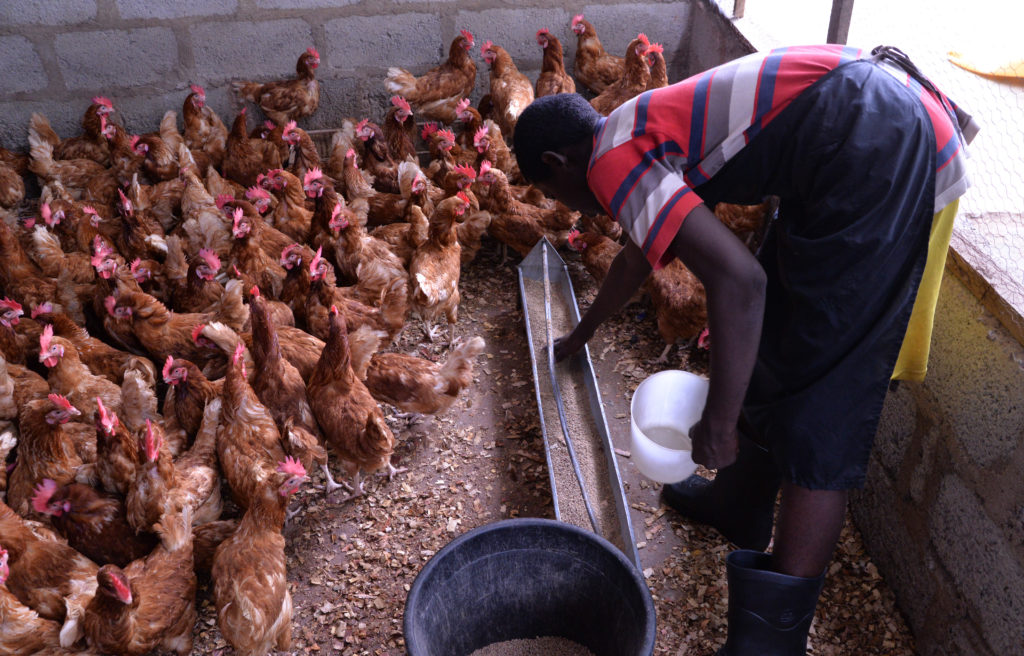Estimating the gap between actual and potential livestock productivity
Photo credit: Shutterstock.
There are huge opportunities to improve yields of milk, meat and eggs in Tanzania and Nigeria, according to our LiveGAPS findings. Our study found that small-to-medium livestock producers have the most potential to improve productivity by applying a combination of interventions. While the concept of yield gaps has been used extensively for crops, LiveGAPS is first ever yield gap study for livestock in low-and middle-income countries.
We used advanced modelling to assess the technical potential for increasing productivity in smallholder livestock systems using a range of interventions. We found that combined interventions are likely to have a bigger impact than any single interventions. Many of these interventions offer good value for money. For example, poultry farmers in Tanzania could increase egg production by about 200% and meat production by more than 300%, by feeding their hens additional supplements, providing daytime housing and improving health care. The findings are summarised in a series of factsheets, which offer specific insights on the best ways to increase productivity in different production systems.
Better data for better decisions
Governments, donors and development agencies want to improve yields of milk, meat and eggs in low-and middle-income countries, where millions of people depend on livestock for nutrition and for their income. In many areas, yields are low because animals receive subpar healthcare and nourishment, or are of low-producing breeds.
These new estimates of livestock yield gaps can help governments and investors target their funds to generating the most benefits for livestock keepers and consumers. The modelling suggests pathways to achieving the ambitious production targets set in countries’ livestock master plans.
Building on a wealth of knowledge
For this study, our LiveGAPS models used data from surveys and livestock monitoring systems, including the World Bank’s Living Standards Measurement Study (LSMS), the International Livestock Research Institute’s African Chicken Genetic Gains (ACGG) and African Dairy Genetic Gains (ADGG) Projects, and RHoMIS – the Rural Household Multi-Indicator Survey.
Explore the data yourself
We developed a number of complementary data visualisation tools in the process of doing these analyses. These allow users to see and explore the data behind the recommendations. Early versions of these apps were tested by the Livestock Data for Decisions (LD4D) community. The apps are open access and we encourage the livestock community to use these resources to develop their insights.
Use the apps to explore the data:
- Livestock holding households characteristics
- Cattle milk yield comparison between regions, agro-ecological zones and breeds
- Country-level livestock numbers, total production and yield
- Nutrient production by country, food group and farm size
- Differences in cattle milk yields among farm households
More information
LiveGAPS in the news
Cross-breeding, herd management key strategy to maximise India’s milk production: Study
Down to Earth (India), 13 April 2021
Watch: CNBC Africa interview with Mario Herrero
Africa Business News (South Africa), 14 April 2021
Acknowledgment
The project was awarded through SEBI-Livestock, the Centre for Supporting Evidence Based Interventions in Livestock, which is based at the University of Edinburgh’s Royal (Dick) School of Veterinary Studies. Funding comes from the Bill & Melinda Gates Foundation.
Article by Vanessa Meadu. Originally posted on the Livestock Data for Decisions website.

